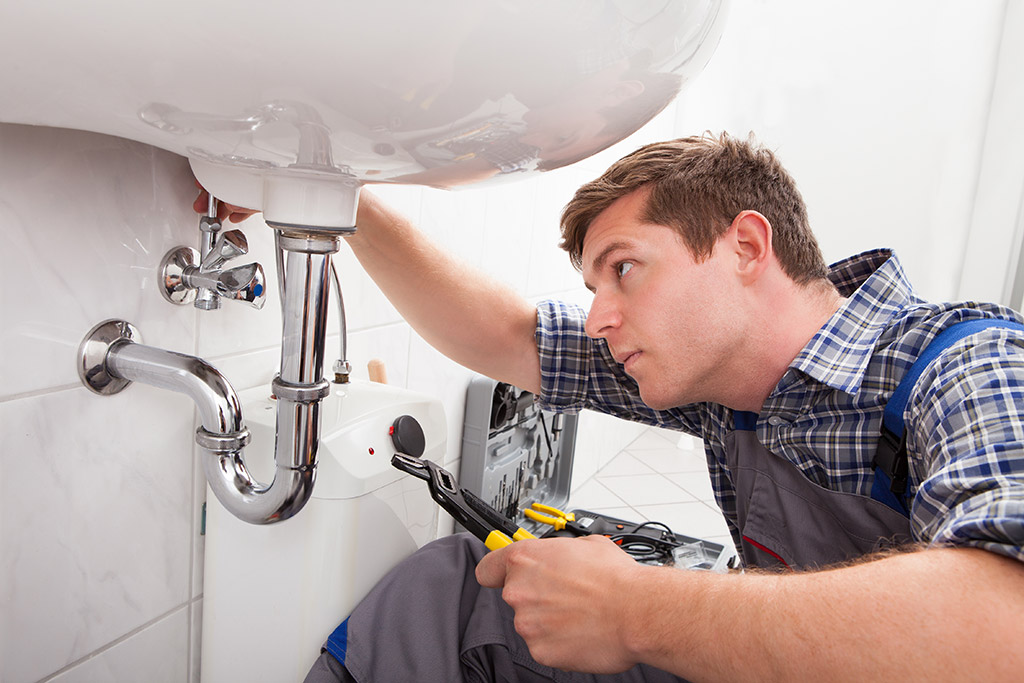A Detailed Guide to Reliable Water Heating Unit Installation for Ideal Efficiency
Starting the job of installing a water heater is a venture that demands precision and an organized strategy for accomplishing ideal performance. The process begins with the vital decision of picking the proper heating system tailored to the specific requirements of your home, thinking about elements such as energy, size, and kind source. As soon as picked, preparing the installation area to fulfill safety and security criteria is extremely important. The trip doesn't finish below. As you proceed, the details of linking supply of water lines and setting up reliable electrical or gas links await, promising insights right into making sure effectiveness and reliability.
Choosing the Right Hot Water Heater

Next, consider the dimension and capability of the hot water heater. It's vital to analyze your household's warm water needs, which can vary based on the number of passengers and their usage patterns. A system that's too tiny may cause insufficient warm water, while a large design might lead to unnecessary power usage.
Performance rankings also play a pivotal function in choice. Look for water heaters with high Energy Variable (EF) ratings, suggesting superior performance and reduced power use. Tankless versions, though typically a lot more costly upfront, deal substantial energy cost savings with time as a result of their on-demand heating capacities.
Preparing the Installation Area
Prior to mounting a brand-new water heating system, meticulous prep work of the installment area is crucial. It's important to gauge the room carefully to accommodate the water heating system's measurements, guaranteeing ample clearance around the unit for efficient operation and maintenance.
Next, remove any particles, dirt, or blockages from the site to produce a tidy atmosphere. Inspect the floor for stability, as the hot water heater will certainly need a solid, level surface to operate successfully. If necessary, set up a drip frying pan beneath the unit to catch possible leakages or spills, protecting against water damages to the surrounding location. In regions prone to seismic task, consider setting up seismic straps to protect the heater strongly in position.
Furthermore, guarantee that all necessary devices and products get on hand before starting the installation. This consists of items such as wrenches, screwdrivers, a level, and any additional hardware required for installing and safeguarding the heating unit. A well-prepared installation location sets the foundation for an effective hot water heater setup, maximizing efficiency and safety.
Connecting Water Supply Lines
When linking water system lines to your freshly set up hot water heater, it is critical to guarantee that all connections are safe and secure and leak-free to maintain effective operation and avoid water damages. Begin by recognizing the cold and warm water system lines. The cold water inlet is generally marked with a blue tag or a "C", while the warm water electrical outlet is marked with a red label or an "H".
Use adaptable water heater connectors to help with a less complicated installation process. Prior to affixing the ports, position a plumbing technician's tape around the threaded ends of the water heating unit's inlet and outlet pipelines.
Once links are in location, This Site gradually activate the main supply of water shutoff. Check each connection for leakages by aesthetically inspecting and really feeling for dampness. Tighten connections as essential, and More Info ensure the stress safety valve is correctly installed, protecting against extreme pressure accumulation.
Establishing Electrical or Gas Links
Effectively establishing up the electric or gas connections for your water heater is an essential step to ensure efficient and safe procedure. For electrical water heaters, start by validating that the electrical circuit is suitable with the heater's voltage and amperage requirements.
For gas water heaters, security is critical. Link the gas line to the water heating unit making use of a versatile gas connector, ensuring it is effectively threaded and sealed with pipeline joint substance or Teflon tape ideal for gas links.
When links are made, inspect for any prospective leakages. For gas lines, apply a soapy water option to the joints; bubbles show a leak. For electric links, verify that all wiring is safe and secure and properly insulated, keeping compliance with regional electric codes.
Adjusting and checking for Effectiveness
With the electric and gas links securely in position, the next step is examining the functional efficiency of your water heating system. Begin by very carefully switching on the water system and making certain there are no leakages at any one of the joints or shutoffs. As soon as verified, proceed to fill up the tank, focusing on the pressure and temperature settings. It is advisable to set the thermostat to an advised temperature of around 120 ° F(49 ° C) to balance energy effectiveness and convenience.
Following, execute a complete assessment to ensure the burner or gas burners are operating appropriately. For electric heating units, make use of a multimeter to validate if the components are drawing the ideal present. In gas models, observe the heater flame; it ought to be constant and blue, suggesting reliable burning.
Change the settings as essential to get rid of inefficiencies. Take into consideration executing insulation actions, such as including a water heating system blanket, to even more improve efficiency by reducing warm loss. In addition, examine the anode pole's condition, as a tatty pole can decrease effectiveness and cause container corrosion.
Conclusion
Reliable hot water heater setup is crucial for making certain optimum performance and more info here energy financial savings. By choosing the proper type and dimension, and meticulously preparing the installment location, a structure for success is developed. Firmly linking water lines and meticulously establishing electric or gas links minimize possible concerns. Thorough testing for leaks and accurate thermostat modifications to 120 ° F enhance integrity and performance. Sticking to these steps promotes lasting capability and energy preservation in property water furnace.

Appropriately setting up the electric or gas links for your water heating unit is a vital action to guarantee reliable and safe operation. For electrical water heating units, begin by confirming that the electrical circuit is compatible with the heating unit's voltage and amperage requirements. Link the gas line to the water heater making use of a versatile gas port, ensuring it is effectively threaded and secured with pipe joint compound or Teflon tape ideal for gas connections.